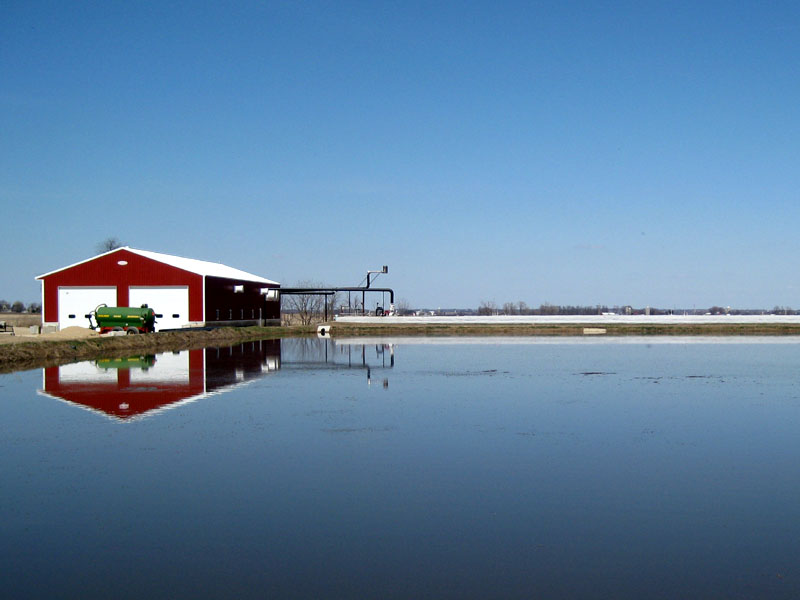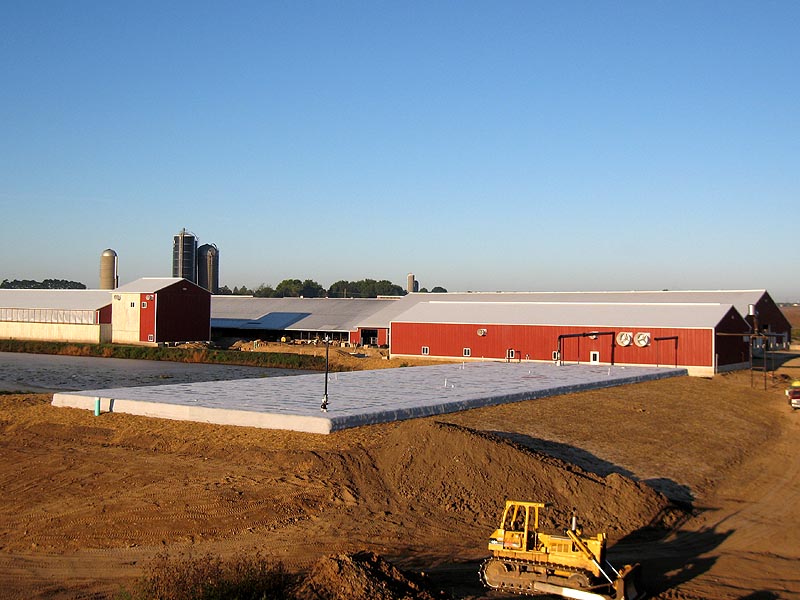Digester Projects
Statz Bros. Farm
With DVO's digesters, Bio Town Ag transformed the Furrer family farm, running since 1966, into 100% sustainable agribusiness. Turning waste into energy, they now produce 2-3x the electricity they use, redefining "waste" as a resource.
Project Details
- Owners: Brothers Richard and Donnie Statz
- Location: Sun Prairie, Wisconsin
- Date Built: 2015
- Labor Used: [unknown]
- Construction Type: [unknown]
- Years in Service: 8
- Energy Type: Biogas, electricity
- Energy Output Average: 600kW
- Input Waste: manure from 4,000-head dairy cows
- Output Byproducts: Liquid fertilizer, animal bedding
Brothers Richard and Donnie Statz, along with their wives Veronica and Shirley, purchased an 80-acre farm in 1966. Since then, the family has grown the home farm to 2,750 dairy cows and 6,000 acres. The family also expanded to a neighboring farm, known as Statz B, which began operation in 2015 and includes multiple new barns and a parlor.
In an effort to generate their own high quality bedding and optimize their nutrient management plan, they turned to DVO to design their first digester on their home farm in 2009. Due to the success of the first digester, they installed their second project with DVO on Statz B in 2015.
Situation
Before any digester
- Conventional electricity is purchased from the utility at market rates.
- Farm used open-air ponds for waste settling. Methane gas from wastes contributes to greenhouse gases at rates 21 times more powerful than carbon dioxide.
- Pathogens such as e-coli and salmonella can be concerns from the use of raw, unprocessed farm wastes.
- Nuisance odor issues can result from manure storage
and application.
After a DVO digester
- Renewable electricity is self-generated and sold back to
the utility. - Methane is consumed by the digester, reducing greenhouse gas emissions from farm wastes by 94%.
- Pathogens in the digested waste are greatly reduced, often to the point of non-detection.
- Up to 97% odor reduction is achieved, as odor is burned away in the biogas engines.
Solution
Project at a Glance
- With the addition of the Statz B farm, their herd increased to
approximately 4,000 cows, and a second DVO digester is
in commission. - Digester produces approximately two to three times as much
electricity as the farm uses. On the home farm, power is sold to
Alliant Energy. On Statz B, the biogas from the system powers
the farm. - Each site has a 600 kW CHP unit running on biogas
Details
- Digested liquid runs to lagoons and is then distributed within a
3-mile radius of their operation via hoses. - Solid byproducts from DVO’s digesters are used at the farm to
provide clean, comfortable bedding for their dairy cows
4,000
Number of dairy cows on the Statz Bros. 6,000 acre farm.
2-3x
Digester produces approximately two to three times as much electricity as the farm uses. On the home farm, power is sold to Alliant Energy. On Statz B, the biogas from the system powers the farm.
600kW
Each site has a 600 kW CHP unit running on biogas.
Gallery


We’d like to hear from you
Please fill out this form, and we’ll get back to you within 24 hours on business days.